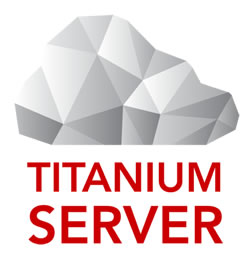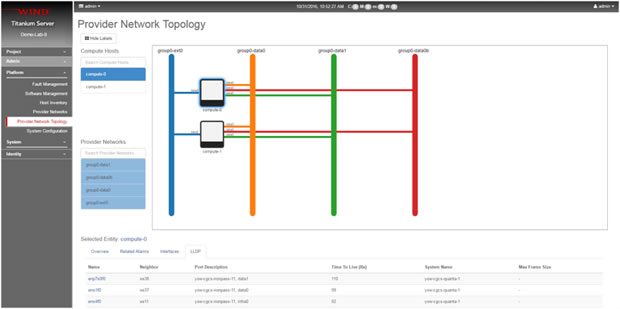As Telcos start NFV deployments, Titanium Server streamlines network operations
As NFV deployments are started, Wind River has released and upgrade to its Titanium Server network virtualisation platform with features that streamline network operations and enable service provider efficiency.
Guest blog by Charlie Ashton.
NFV: growing up and putting Operations in the hot seat
As service providers move away from Network Functions Virtualisation (NFV) Proof-of-Concepts (PoCs) and start working on actual deployments, the spotlight now falls on a wide range of operational issues. The Operations teams have to figure out how they’re going to install, commission, maintain and upgrade all this new technology while at the same time maintaining the level of uptime that their customers demand and still achieving the OPEX savings that represent a basic premise of NFV.
Just in time for this phase of operationalising NFV, Wind River has released an upgrade to the Wind River Titanium Server network virtualisation platform, incorporating a wealth of features that streamline network operations and enable service provider Operations teams to achieve the efficiencies that they’re looking for.
Here some of these new features are highlighted and outline the business-level benefits that they deliver.
Designed for operational efficiency
Release 3 of Titanium Server leverages experience that has been gained through countless engagements with service providers, Telecom Equipment Manufacturers (TEMs) and ecosystem partners ever since we launched Titanium Server at the start of 2014.
As the first (and so far only) network virtualisation platform that delivers the uptime, security and performance needed for real deployments in commercial telecom networks, Titanium Server has been selected as the NFV infrastructure platform for a range of edge, access and core use cases. Experts have worked with customers worldwide to ensure that we fully understand their needs for operational efficiencies so that we can provide the technology that enables them to meet those goals.
In-service upgrades and patching
IT departments live by planned outages. Send out an email saying that the CRM system will be down from 10.00pm on Saturday until 6.00am on Sunday, then everyone else can have a life while the IT guys take down the system, do their upgrade and even roll it back if it fails. No business impact and everyone is happy.
Telecom service providers don’t have that luxury. They’ve have spent decades implementing complex systems and processes that allow them to keep their networks up 24×7, while implementing system upgrades and patches seamlessly so their customers experience no downtime. But those systems are based on purpose-built telco hardware and software.
NFV is different: it leverages enterprise-class, open-source software like OpenStack that was never designed to deliver telco reliability. So to develop Titanium Server, Wind River established a team of experts who have long experience in building telco-class software and paired them with other folks with a deep knowledge of OpenStack. Together, they developed a set of OpenStack plug-ins, operational enhancements and automated procedural mechanisms that enable Titanium Server to deliver full Carrier Grade uptime (six-nines availability) while being based on standard open-source OpenStack releases, currently Mitaka.
The new version of Titanium Server incorporates an integrated, system-aware upgrade wizard that automates the entire upgrade process. First, running Virtual Network Functions (VNFs) are live migrated from one node to another (even those using DPDK). Then the OS, OpenStack components, hypervisor and Virtualisation Infrastructure Manager (VIM) are upgraded along with the rest of the Titanium Server package. Messages, logs and alarms provide full visibility into the process. Rollback points are created for controlled fallback, if required, and all system data is reformatted and migrated.
This results in a system-wide upgrade that’s risk-free for service providers and completely transparent to customers, who see no service degradation or downtime. Titanium Server allows service providers to leverage virtualisation technology originally developed for enterprise IT while maintaining the service continuity that their business reputation depends on.
Legacy infrastructure (brownfield environments) and multi-region support
Until Mars One or SpaceX succeeds beyond even their wildest dreams and all of a sudden we have hundreds of people living on Mars with an immediate need for non-stop Facebook and Instagram access, there are no true ‘greenfield’ opportunities for NFV.
Rather than starting from scratch and deploying networks that are 100% based on network virtualisation, service providers must face the challenge of progressively introducing virtualisation into their existing, legacy networks already in use by their established customer base. At the same time, they need to ensure that these customers suffer no degradation in service while the new network technologies are deployed.
From the perspective of network operations, multi-region clouds present a similar challenge. Many service providers already leverage virtualisation within their telco clouds, even if it doesn’t provide the level of reliability, performance or security required for NFV. They need to integrate their NFV deployments with these existing cloud environments.
Release 3 of Titanium Server was designed to mitigate the operational risks and issues associated with introducing NFV into live ‘brownfield’ environments based on traditional physical equipment and/or existing clouds. Titanium Server provides comprehensive support for federated, multi-region network architecture. A Carrier Grade region based on Titanium Server can be added to an existing enterprise-class cloud. Similarly, a Titanium Server-based KVM hypervisor region can be added to an existing cloud based on an enterprise-class VMware hypervisor. In both cases, the integration between the two clouds can include the common management of users, images and volumes
System visibility and alarms
The operations personnel responsible for the smooth running of service provider networks need to have the right level of visibility into what’s going on ‘under the hood’ within their infrastructure. As they introduce NFV, it’s important that the virtualisation platform they adopt should present them with the appropriate level of operational information without overwhelming them with screens of unnecessary or confusing data.
The latest version of Titanium Server includes a variety of dashboards that provide operators with a range of clear status information about their networks, while allowing them to customise their displays to present the information that is most appropriate and valuable at any point in time.
Operators have clear access to physical server inventory data covering their compute, control and storage nodes. They benefit from integrated discovery, provisioning, configuration and management controls elegantly presented in the familiar Horizon style.
Comprehensive visual aids assist in configuring and troubleshooting both provider networks and tenant networks. The ‘Software Management’ dashboard enables the definition of custom strategies for deploying patches to all nodes in the system.
The fault management system integrated within Titanium Server enables network operators to view critical, major, minor and warning alarms, while also providing a hierarchical search capability for both alarms and logs. Alarms can be suppressed manually so that operators see only those alerts that they define as having the greatest value. A ubiquitous, colour-coded alarm banner ensures rapid visibility into system health, regardless of which section of the user interface is being accessed at any one time.
Courtesy of Wind River.








